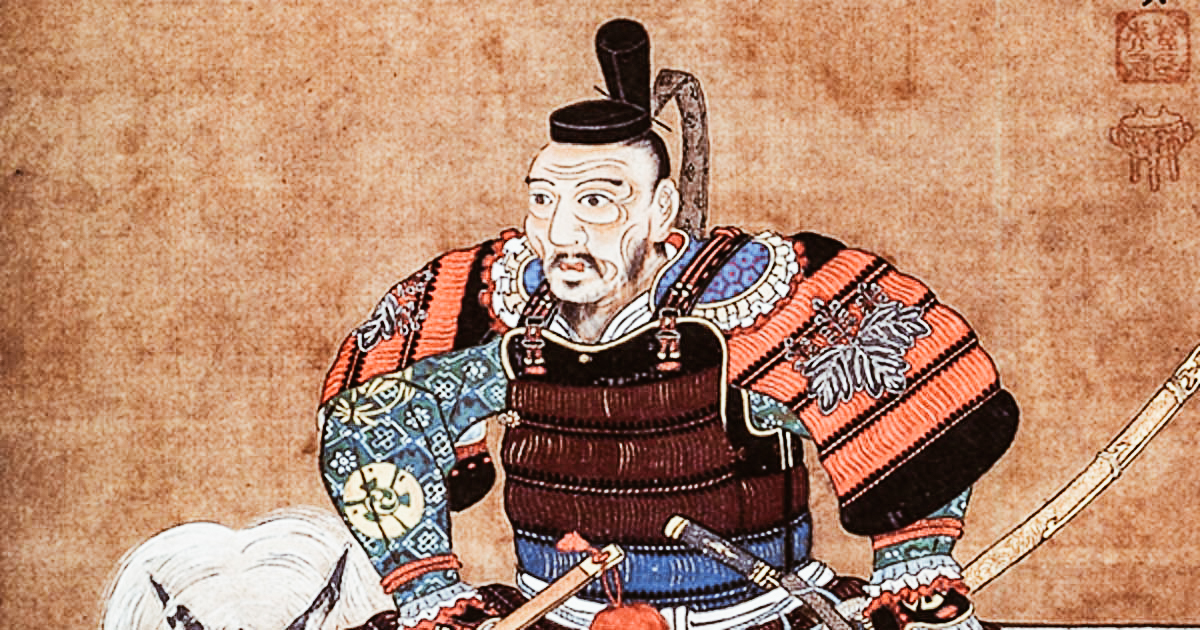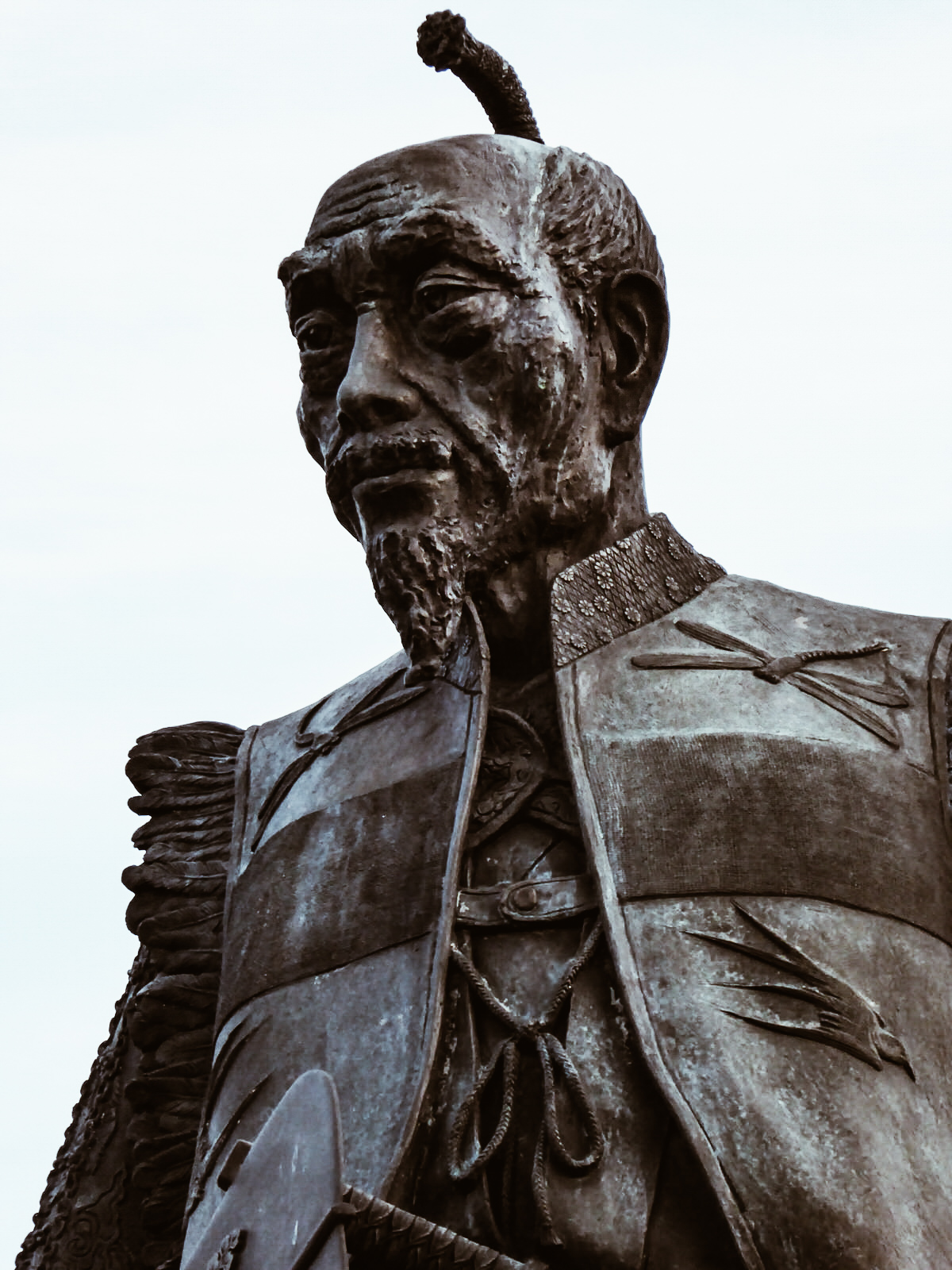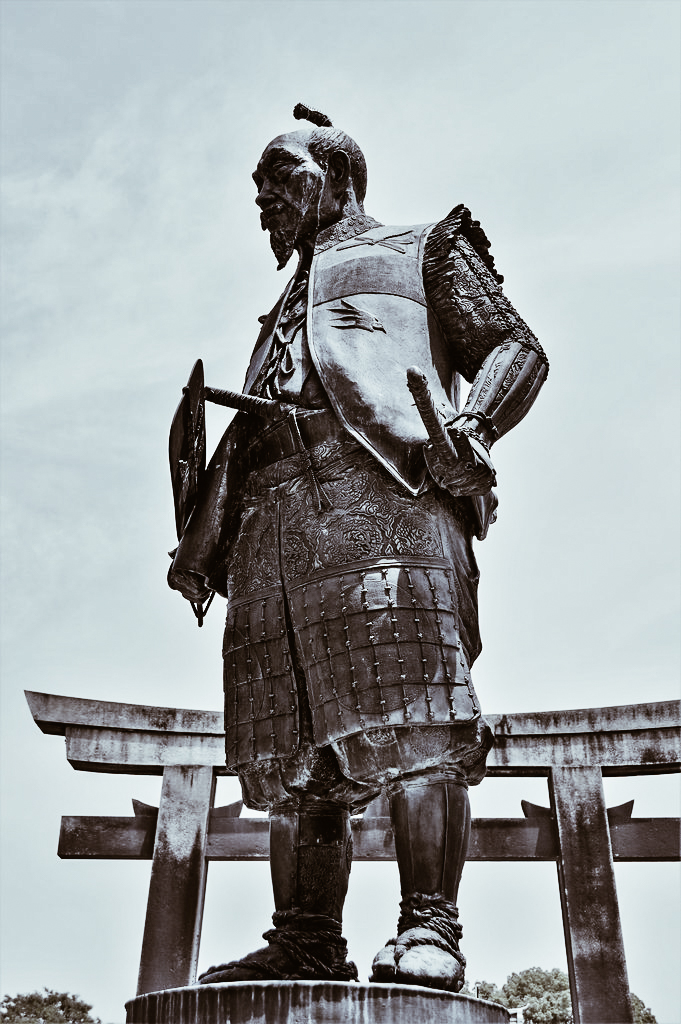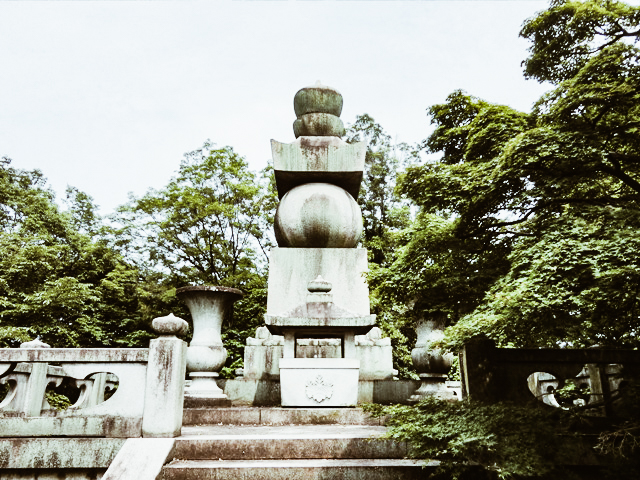Japan History: Toyotomi Hideyoshi
Toyotomi Hideyoshi, the great unifier of Japan
written by: SaiKaiAngel | translation: Erika

photo credits: ancient-origins.net
Toyotomi Hideyoshi (March 17, 1537 – September 18, 1598) was a samurai, as well as daimyō, the successor of Oda Nobunaga as “great unifier” of Japan, ending the Sengoku period. The period of his dominion is called Momoyama, from the name of Hideyoshi castle. It appears that his birth was in Owari province, the home of the Oda clan (present-day Nagoya in Aichi prefecture). Son of an ashigaru peasant named Yaemon. It seems that his childhood name was Hiyoshi-maru. His father died when Hideyoshi was 7 years old.
Hideyoshi was sent to study in a temple as a young man, but he refused that life to go on an adventure hunt. Under the name Kinoshita Tōkichirō he joined the Imagawa clan for the first time as a servant of a local ruler named Matsushita Yukitsuna. He traveled to the lands of Imagawa Yoshimoto, daimyō of Suruga province, and served him only to escape with a sum of money entrusted to him by Matsushita Yukitsuna.

photo credits: samurai-world.com
The young Toyotomi Hideyoshi led a small group to attack the castle on Mount Inaba and in 1558, he joined the Oda clan, led by Oda Nobunaga, as ashigaru (lit. “light feet” who were employed in the conflicts of feudal Japan by the samurai caste.)
He became one of Nobunaga’s sandal bearers and was present in the battle of Okehazama in 1560 when Nobunaga defeated Imagawa Yoshimoto to become one of the most powerful warlords in the Sengoku period. He also appears to have overseen the repair of Kiyosu Castle by running the kitchen.
In 1561 Hideyoshi married the adopted daughter of Asano Nagakatsu. He made repairs on Sunomata Castle with his younger brother Toyotomi Hidenaga, Hachisuka Masakatsu and Maeno Nagayasu. He built a fort in Sunomata, at night also discovering a secret way to Mount Inaba
Siege of Inabayama Castle
Hideyoshi was very successful as a negotiator. In 1564, he managed to convince the warlords Mino to desert the Saitō clan. He then approached many samurai convincing them to follow Nobunaga.
Nobunaga’s easy victory at Inabayama Castle in 1567 was largely due to Hideyoshi’s efforts and for this he became one of Nobunaga’s most illustrious generals, eventually taking the name of Hashiba Hideyoshi. The new surname included two characters, one each of Oda’s other two men, Niwa Nagahide and Shibata Katsuie.
Battle of Anegawa
Hideyoshi led the troops to the battle of Anegawa in 1570 in which Oda Nobunaga allied himself with Tokugawa Ieyasu to besiege two fortresses of the Azai and Asakura clans. He participated in the siege of Nagashima in 1573 and in the same year, Nobunaga named Hideyoshi daimyō from three districts in the northern part of the Ōmi Province. Afterward, he moved to Kunitomo and renamed the city of Nagahama in homage to Nobunaga. Later Hideyoshi moved to the port of Imahama on Lake Biwa and took control of the nearby Kunitomo firearms factory which had been set up a few years earlier by the Azai and Asakura families, increasing its production.
Furthermore, he fought in the battle of Nagashino after which Nobunaga sent Hideyoshi to Himeji Castle to conquer the Chūgoku region by the Mori clan in 1576.
In 1577, he fought in the battle of Tedorigawa, in the siege of Miki, in the siege of Itami (1579) and in the siege of Takamatsu in 1582.
Battle of Yamazaki and conflict with Katsuie
After the murders of Honnō-ji of Oda Nobunaga and his eldest son Nobutada in 1582 at the hands of Akechi Mitsuhide, Hideyoshi, seeking revenge for the death of his beloved lord, made peace with the Mōri clan and defeated Akechi in the battle of Yamazaki.
Subsequently, being in a good position, he called the powerful daimyo to Kiyosu so that they could determine Nobunaga’s heir. Oda Nobukatsu and Oda Nobutaka quarreled, then the heir became Samboshi, Nobunaga’s grandson. Having won the support of Oda’s other two elders, Niwa Nagahide and Ikeda Tsuneoki, Hideyoshi took the position of Hidenobu and his influence on the Oda clan. He distributed the provinces of Nobunaga among generals and formed a council of four generals. The tension between Hideyoshi and Katsuie resulted in the battle of Shizugatake the following year in which Hideyoshi destroyed Katsuie’s forces. By then Hideyoshi had faced most of the Oda clan and control of 30 provinces.
Building of Osaka Castle
In 1582, Hideyoshi began building Osaka Castle on the site of the Ishiyama Hongan-ji temple destroyed by Nobunaga; this became the last stronghold of the Toyotomi clan after Hideyoshi’s death.
Battle of Komaki and Nagakute
Oda Nobukatsu, hostile to Hideyoshi, allied with Tokugawa Ieyasu and the two sides fought in the battle of Komaki and Nagakute. Eventually, it resulted in a stalemate, although Hideyoshi’s forces suffered a severe blow. Finally, Hideyoshi made peace with Nobukatsu, ending the pretext for war between the Tokugawa and Hashiba clans. Ieyasu eventually agreed to become a Hideyoshi vassal.
Hideyoshi never obtained the title of shōgun, but made sure to get adopted by Konoe Sakihisa, one of the noblest men belonging to the Fujiwara clan and ensured a succession of high court titles including, in 1585, the prestigious position of Imperial Regent (kampaku). In 1586, Hideyoshi officially received the name of the new Toyotomi clan from the imperial court and built the Jurakudai, a sumptuous palace, in 1587 entertaining the reigning emperor, Go-Yōzei, the following year.
Japan unified under Toyotomi Hideyoshi
Subsequently, Hideyoshi subjugated the province of Kii and conquered Shikoku under the Chōsokabe clan. He then took control of Etchū province and also conquered Kyūshū.
In 1587 Hideyoshi banned Christian missionaries from Kyūshū to exercise greater control over Kirishitani daimyōs.
In 1588 he forbade the peasant townships to possess weapons and began to confiscate them. Swords were cast to create a Buddha statue. This measure effectively stopped peasant revolts and ensured greater stability at the expense of the freedom of the individuals.
Siege of Odawara
The siege of Odawara in 1590 against the Hōjō clan in the Kantō region eliminated the last resistance to Hideyoshi’s authority. His victory meant the end of the Sengoku period. During this siege, Hideyoshi offered Ieyasu the eight provinces governed by Hōjō in the Kantō region in exchange for the submission of the five provinces of Ieyasu, who accepted this proposal.
In February 1591, Hideyoshi ordered Sen no Rikyū to commit suicide, probably in one of his outbursts of anger. Rikyū had been a trusted supporter and master of the tea ceremony under Hideyoshi and Nobunaga. He also made significant changes to the aesthetics of the tea ceremony which had a lasting influence on many aspects of Japanese culture. Even after Rikyū died, Hideyoshi is said to have built his many construction projects based on the aesthetics promoted by Rikyū, perhaps suggesting that he regretted his actions.
After Rikyū died, Hideyoshi brought the tea ceremony to Noh, who studied since he became imperial regent.
The stability of the Toyotomi dynasty after Hideyoshi’s death was questioned with the death of his son Tsurumatsu in September 1591. The three-year-old boy was his only son. When his half-brother Hidenaga died shortly thereafter, Hideyoshi named his nephew Hidetsugu his heir, adopting him in January 1592. Hideyoshi resigned as kampaku to obtain the title of taikō and Hidetsugu succeeded him as kampaku.
Houkokubyo (Toyotomi Hideyoshi Mausoleum) Higashiyama-ku, Kyoto
As his health began to falter, Hideyoshi carried on the dream of Oda Nobunaga, that of a Japanese conquest to China, arriving at the Ming dynasty through Korea.
Hideyoshi asked Koreans for a ride to China in 1587, but without success, because Korea was allied with China and in April and July 1591 he also refused the request to pass through Korea for fear of jeopardizing security. Then, in August 1591, Hideyoshi ordered preparations to begin an invasion of Korea.

photo credits: flickr.com
First campaign against Korea
In the first campaign, Hideyoshi appointed Ukita Hideie as marshal and sent him to the Korean peninsula in April 1592. Konishi Yukinaga then occupied Seoul on June 19. After the fall of Seoul, Japanese commanders held a war council and determined submission targets called Hachidokuniwari from each corps. In just four months, Hideyoshi’s forces made their way to Manchuria and occupied much of Korea. Korean King Seonjo fled to Uiju and asked for military intervention from China. In 1593, Ming China Emperor Wanli sent an army under General Li Rusong to block the planned Japanese invasion of China and recapture the Korean Peninsula. The Ming army of 43,000 soldiers led by Li Ru-Song continued to attack Pyongyang.
On January 7, 1593, Ming’s relief forces under Li still captured Pyongyang and surrounded Seoul, but Kobayakawa Takakage, Ukita Hideie, Tachibana Muneshige and Kikkawa Hiroie won the Battle of Byeokjegwan on the outskirts of Seoul. At the end of the first campaign, the entire Japanese navy was destroyed by Korea’s Admiral Yi Sun-sin, whose base was located in a part of Korea that the Japanese could not control. This, in fact, put an end to Japan’s dream of conquering China as the Koreans simply destroyed Japan’s ability to resupply their bogged down troops in Pyongyang.
Succession dispute
The birth of Hideyoshi’s second son in 1593, Hideyori, created a succession problem. To avoid this, Hideyoshi exiled his nephew and heir Hidetsugu to Mount Kōya and then ordered him to commit suicide in August 1595. Members of the Hidetsugu family who did not follow his example were later murdered in Kyoto.
In January 1597, Toyotomi Hideyoshi had twenty-six Christians arrested as an example of Japanese who wanted to convert to Christianity. They are known as the twenty-six martyrs of Japan. They included five European Franciscan missionaries, one Mexican Franciscan missionary, three Japanese Jesuits and seventeen Japanese, including three young boys. On February 5, they were executed in Nagasaki for public crucifixion.
Second campaign against Korea
After several years of negotiations, Hideyoshi appointed Kobayakawa Hideaki to conduct a renewed invasion of Korea, but their efforts on the peninsula were less successful. Japanese troops got stuck in Gyeongsang province. In June 1598, Japanese forces repelled several Chinese offensives to Suncheon and Sacheon, but were unable to make further progress as the Ming army prepared for a final assault. Koreans continually harassed Japanese forces, while the battle of Hideyoshi in Sacheon was a great victory for Japan.
Toyotomi Hideyoshi died on September 18, 1598. He was delusional and his last words, delivered to his closest generals, were “I will depend on you for everything. I have no other thoughts to leave behind. It is sad to part with you. ” His death was kept secret by the Council of Five Elders to preserve morale and Japanese forces in Korea were ordered to withdraw to Japan by the Council of Five Elders (Tokugawa Ieyasu, Maeda Toshiie, Uesugi Kakekatsu, Mori Terumoto, Ukita Hideie).
Since they had failed to capture Korea, Hideyoshi’s forces were unable to reach China either. The fighting force ran out, his vassals clashing over responsibility for failure and the clans that were loyal to the name Toyotomi weakened. The dream of a Japanese conquest of China has been put on hold indefinitely. The Tokugawa government later not only prohibited further military expeditions to the Asian mainland, but closed Japan to almost all foreigners during the Tokugawa shogunate years. It was only at the end of the 19th century that Japan again fought a war against China through Korea, using more or less the same path used by Hideyoshi’s force.
After his death, the other members of the Council of Five Regents were unable to control Tokugawa Ieyasu’s ambitions.

photo credits: jekyoto.wordpress.com
Toyotomi Hideyoshi’s Cultural heritage
Toyotomi Hideyoshi has changed Japanese society in many ways.
Class reforms have affected citizens and warriors. During the Sengoku period, it had become common for peasants to become warriors or for samurai to cultivate because of the constant uncertainty caused by the lack of centralized government and ever-provisional peace. After taking control, Hideyoshi decreed that all the peasants were completely disarmed and that the samurai left the land to settle in the castle towns. This strengthened the social class system for the next 300 years.
In addition, he ordered a complete census of Japan. After this, he asked all the Japanese to stay in their respective han (fiefdoms) unless they had obtained official permission to go elsewhere.
In 1590, Hideyoshi completed the construction of Osaka Castle, the largest in all of Japan, to protect western approaches to Kyoto. In the same year, he banned “non-free labor” and slavery, but the forms of contracts and forced labor continued equally.
Hideyoshi also influenced Japan’s material culture. He spent time and money on the tea ceremony, collecting tools, sponsoring sumptuous social events and sponsoring acclaimed masters. As interest in the tea ceremony grew among the ruling class, not only were large quantities of precious ceramic items confiscated, but many Korean craftsmen were forcibly transferred to Japan.
Inspired by the dazzling golden pavilion of Kyoto, he had the Golden Tea Room built, which was covered with a gold leaf and lined inside with a red gossamer. Using this mobile innovation, he was able to practice the tea ceremony wherever he went, forcefully projecting his power and status unmatched upon his arrival.
Politically, he established a government system that balanced the most powerful Japanese warlords. A council was created to include the most influential gentlemen.
Shortly before his death, Hideyoshi hoped to establish a stable enough system to survive until his son became old enough to become the next leader. A council of five elders (go-tairō) was formed, consisting of the five most powerful daimyō. After Maeda Toshiie’s death, however, Tokugawa Ieyasu began to form alliances, including political marriages. In the end, pro-Toyotomi forces fought against the Tokugawa in the battle of Sekigahara. Ieyasu won and received the Seii-Tai Shōgun title two years later.
Toyotomi Hideyoshi’s Names
At birth, he was given the name Hiyoshi-Maru. In genpuku, he took the name Kinoshita Tōkichirō. Later, he was given the surname Hashiba and the office of the honorary court Chikuzen no Kami, as a result, Hashiba Chikuzen no Kami Hideyoshi was designated.
Toyotomi Hideyoshi had received the nickname Kozaru, meaning “little monkey”, from his lord Oda Nobunaga because his facial features and lean shape resembled that of a monkey. He was also known as the “bald rat”.
Hideyoshi left an influential and enduring legacy, including the samurai’s restriction on weapons possession, the construction and restoration of many temples, some of which are still visible in Kyoto, and the Japanese invasions of Korea (1592-1598 ).
Share this:
- Click to share on Facebook (Opens in new window)
- Click to share on Twitter (Opens in new window)
- Click to share on Tumblr (Opens in new window)
- Click to share on Pinterest (Opens in new window)
- Click to share on Telegram (Opens in new window)
- Click to share on WhatsApp (Opens in new window)
- Click to share on Reddit (Opens in new window)
- Click to print (Opens in new window)






